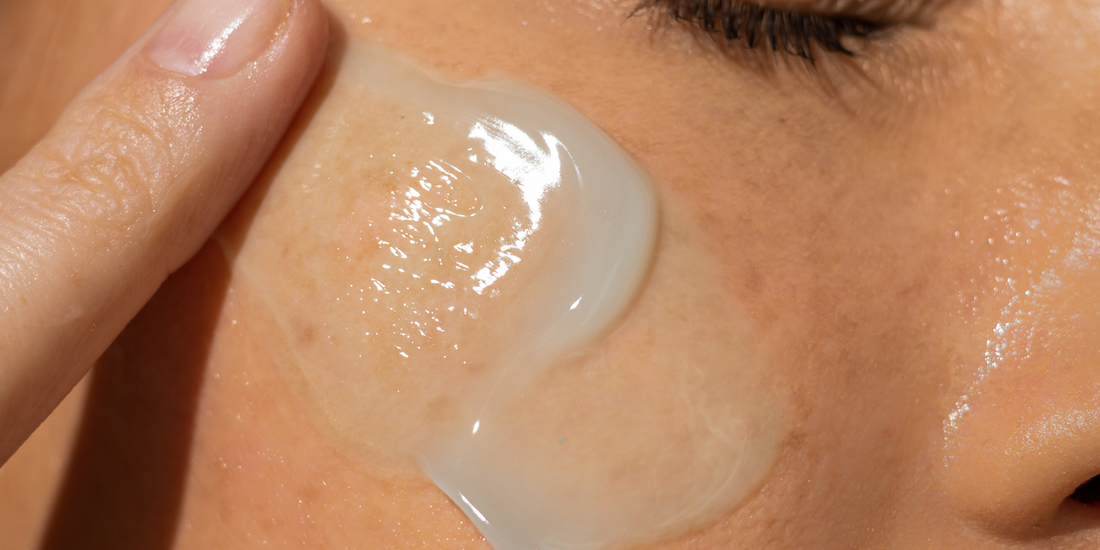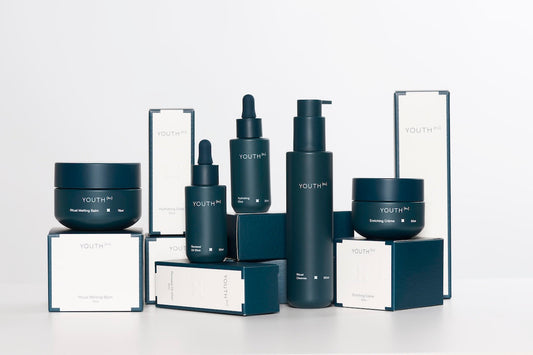
Face-Mapping: What Your Acne Means
Ashleigh PostHi there! Did you know that the root of acne often stems from beyond the surface of the skin? In fact, it can be a reflection of internal imbalances that causes these stubborn breakouts.
An ancient practice rooted in Chinese medicine and Ayurveda, face-mapping, suggests that breakouts in specific areas of your face can reveal potential links to your internal health. Yeah, I know. It is amazing how our body works.
While modern dermatology approaches face-mapping with a side of caution, science supports connections between acne patterns, lifestyle factors, and overall health. In this guide, we’ll explore the concept of face-mapping, share actionable skincare and lifestyle tips, and highlight when it’s time to consult a professional.
What is Face-Mapping?
Face-mapping is the process of analyzing the location of acne and using it to identify potential underlying causes. Dividing the face into zones: forehead, cheeks, jawline, nose, and more, each area is associated with a specific organ and bodily function.
Please note that face-mapping isn't a diagnostic tool, however it can offer insights into how lifestyle habits or internal health might influence your skin and combining these observations with evidence-based skincare and healthy routines can help guide you toward clearer, healthier skin.
Face-Mapping Zones and What Your Acne Means
1. Forehead: Digestive System and Stress
Breakouts on the forehead may point to digestive issues, stress, or lack of sleep. This area is also prone to acne from hair products (pomade acne) or wearing hats.
Science Says:
Stress elevates cortisol levels, which can increase oil production and inflammation, leading to breakouts.
A diet high in processed foods can disrupt gut health, potentially worsening acne.
Our Tips:
- Skincare: Use non-comedogenic cleansers like Aspect Gentle Clean Facial Cleanser and gently exfoliate with Dermalogica Daily Microfoliant to keep pores clear.
- Supplements: Support gut health with probiotics like The Beauty Chef Gut Primer.
- Diet: Eat fiber-rich foods, stay hydrated, and reduce sugary or processed foods.

2. Cheeks: Respiratory System and Environment
Cheek acne is often linked to environmental factors like pollution, makeup residue, or touching your face. Smoking and poor air quality can also exacerbate breakouts in this area.
Science Says:
Pollutants can clog pores and cause oxidative stress on the skin.
Smoking decreases blood flow and damages collagen, making skin more prone to breakouts.
Our Tips:
- Skincare: Cleanse thoroughly at night with La Roche-Posay Toleriane Hydrating Gentle Cleanser and protect skin with antioxidants like Skinceuticals C E Ferulic.
- Lifestyle: Avoid smoking, wash pillowcases regularly, and clean phone screens to prevent bacteria transfer.
- Supplements: Try antioxidant-rich options like Vida Glow Natural Marine Collagen to support skin health.
3. Jawline and Chin: Hormonal Imbalances
Acne along the jawline and chin is often linked to hormonal fluctuations, such as those experienced during menstruation or due to conditions like PCOS.
Science Says:
Hormonal acne is triggered by androgens, which stimulate oil production.
The Journal of Clinical and Aesthetic Dermatology confirms hormonal acne is most common in the lower third of the face.
Our Tips:
- Skincare: Use salicylic acid products like Mesoestetic Purifying Mousse to unclog pores and an exfoliant serum like iS Clinical Active Serum to reduce the appearance of fine lines, uneven pigmentation and blemishes.
- Diet: Reduce dairy and high-glycemic foods that may worsen hormonal imbalances.
- Supplements: Consider zinc (e.g., JSHealth Hormone + PMS Support) or DIM supplements to support hormonal balance. Consult your doctor first.
- When to See a Doctor: If hormonal acne is persistent or painful.

4. Nose: Heart Health and Sebaceous Activity
The nose is rich in oil glands, making it prone to blackheads and whiteheads. Some face-mapping theories also associate this zone with heart health.
Science Says:
Excess oil production and clogged pores are the primary culprits for acne in this area.
Diets high in saturated fats may contribute to inflammation and oiliness.
Our Tips:
- Skincare: Use oil-controlling products like Ultraceuticals Ultra Clear Foaming Cleanser and exfoliate with iS Clinical Tri-Active Exfoliating Masque.
- Diet: Focus on heart-healthy foods like fish, nuts, and leafy greens.
- Supplements: Omega-3s, such as JSHealth Omega 3 Fish Oil, may help reduce inflammation.
5. Temples: Liver and Detoxification
Acne around the temples may reflect dietary habits, dehydration, or alcohol consumption, which can strain the liver.
Science Says:
While the liver naturally detoxifies, excess alcohol, greasy foods, or dehydration may affect its efficiency.
Our Tips:
- Skincare: Cleanse with Medik8 Surface Radiance Cleanse to keep this area clear.
- Lifestyle: Reduce alcohol intake and drink plenty of water. Add detoxifying foods like leafy greens and lemon water to your diet.
- Supplements: Try The Beauty Chef Clear Skin Inner Beauty Support Powder for added detox support.

When to See a Professional
- Your acne is severe, cystic, or scarring.
- Over-the-counter products and lifestyle changes aren’t improving your skin.
- You suspect underlying conditions like PCOS, gut health issues, or food intolerances.
Who Can Help?
Dermal Therapists:
Offer treatments like enzyme peels, LED therapy (e.g., OmniLux LED Masks), or microdermabrasion to clear pores and reduce acne.
General Practitioners:
Can run tests for hormonal imbalances or underlying conditions and refer you to a dermatologist if needed.
Dermatologists:
Provide advanced treatments such as prescription-strength retinoids, antibiotics, or chemical peels.
Naturopaths or Functional Medicine GPs:
Address root causes of acne, focusing on gut health, inflammation, and hormonal balance with natural remedies and lifestyle changes.
General Tips for Clear Skin
- Clean Tools: Wash makeup brushes and sponges weekly.
- Stay Hydrated: Drink at least 2 liters of water daily.
- Get Quality Sleep: Poor sleep worsens inflammation and stress. Change pillowcases frequently (daily for severe acne).
- Sun Protection: Always wear sunscreen, like Aspect Sun Hydrating Face SPF 50+ or La Roche-Posay Anthelios XL Anti-Shine SPF 50+, to prevent post-inflammatory hyperpigmentation.
Decode Your Breakouts with Face-Mapping
While face-mapping isn’t an exact science, it provides valuable insights into how lifestyle, diet, and habits may affect your skin. By combining tailored skincare routines with healthy habits and seeking professional guidance when needed, you can take control of your skin health and work toward clearer, healthier skin.


